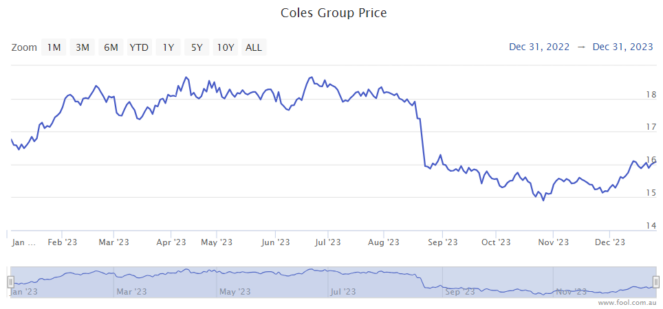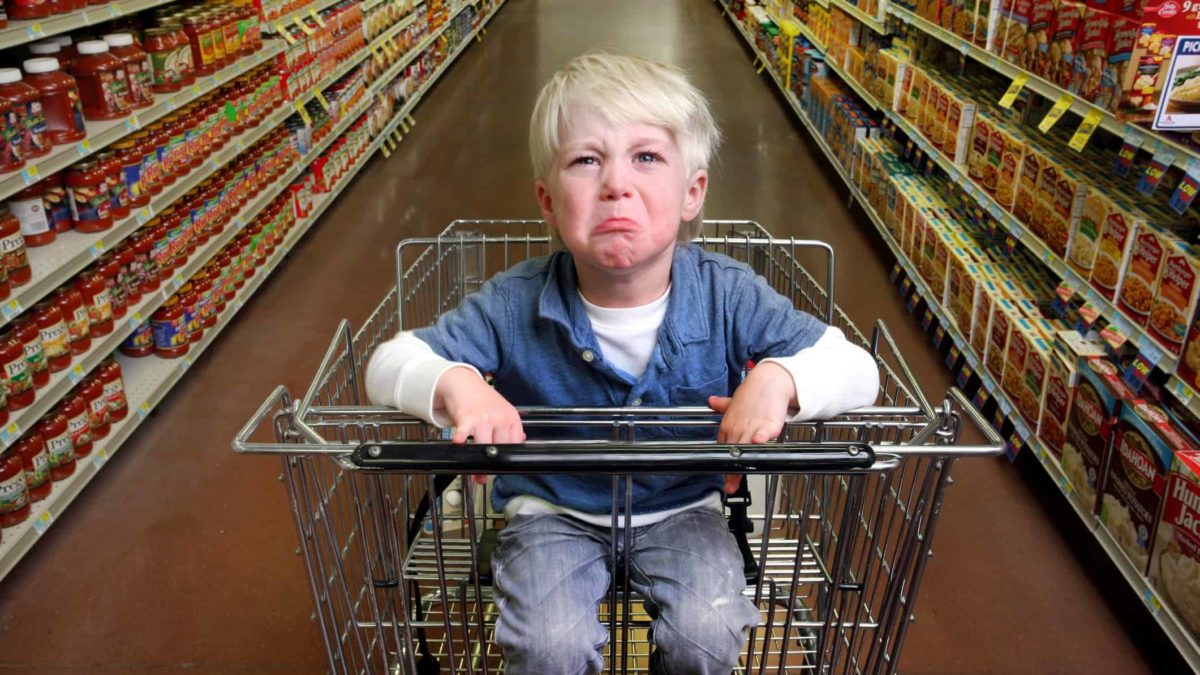The Coles Group Ltd (ASX: COL) share price didn't have the best year in 2023, falling by 2%. At the same time, the S&P/ASX 200 Index (ASX: XJO) rose by just over 9%. That means Coles shares underperformed the ASX 200 last year by more than 10%.

It may surprise some investors that the supermarket giant hasn't done well recently, considering the costs of inflation it has passed onto customers.
However, Coles is facing some headwinds which could continue into 2024.
Slowing inflation
Coles received a major revenue boost in FY23 as shoppers paid significantly more for the same basket of goods. If the company can maintain its earnings before interest and tax (EBIT) margin and net profit after tax (NPAT) margin, then revenue growth directly leads to similar profit growth.
However, inflation is slowing down, and this means revenue growth isn't as appealing.
Investors will usually take the most recent update and place the most importance on that when judging the business.
In the first quarter of FY24, which is the three-month period to 24 September 2023, supermarket revenue rose 4.7% to $9.2 billion, with supermarket e-commerce sales growth of 24.6% and exclusive brand sales revenue growth of 9.4%. However, the company reported total supermarket inflation of 3.1%, down from 7.1% in the prior year.
In the company's outlook statement, it said in the early part of the FY24 second quarter, supermarket sales revenue growth was "broadly in line" with the first quarter.
Increasing costs
The company may well report a lower profit margin in the first half of FY24 because of a variety of factors, which isn't what investors want to see for Coles shares.
Wages are expected to increase at a fast rate in FY24, with an expectation that store remuneration will increase by 5.75% because of the Fair Work Commission annual wage increase, as well as the Victorian payroll tax increase, which is estimated to have an impact of approximately $20 million per annum.
On top of that, Coles has been suffering from stock loss, with theft on the increase. The company has been taking measures to address this, but stock loss is an expense and addressing it costs the business money as well.
Plus, the business is expecting to report an increase in depreciation and amortisation in FY24 to $1.65 billion, reflecting the higher level of capital expenditure over the last few years, as well as a full year of operations at the Redbank automated distributed centre and the opening of the Kemps Creek automated distributed centre.
Medium-term outlook
It's not all negative for the company. Coles said it's well-positioned to benefit from "continued growth and innovation" in its exclusive brand portfolio.
Coles pointed out Australia's high population growth and increases in at-home consumption.
Over the next few years, it expects to see a more resilient and efficient supply chain as its automated distribution centres ramp up and focus on delivering improved availability.
The supermarket was also confident there were "opportunities to enhance our fresh offering, drive growth and loyalty" through digital platforms and the launch of automated customer fulfilment centres. Coles also aims to improve productivity.
In the longer term, these improvements could help boost the Coles share price.









